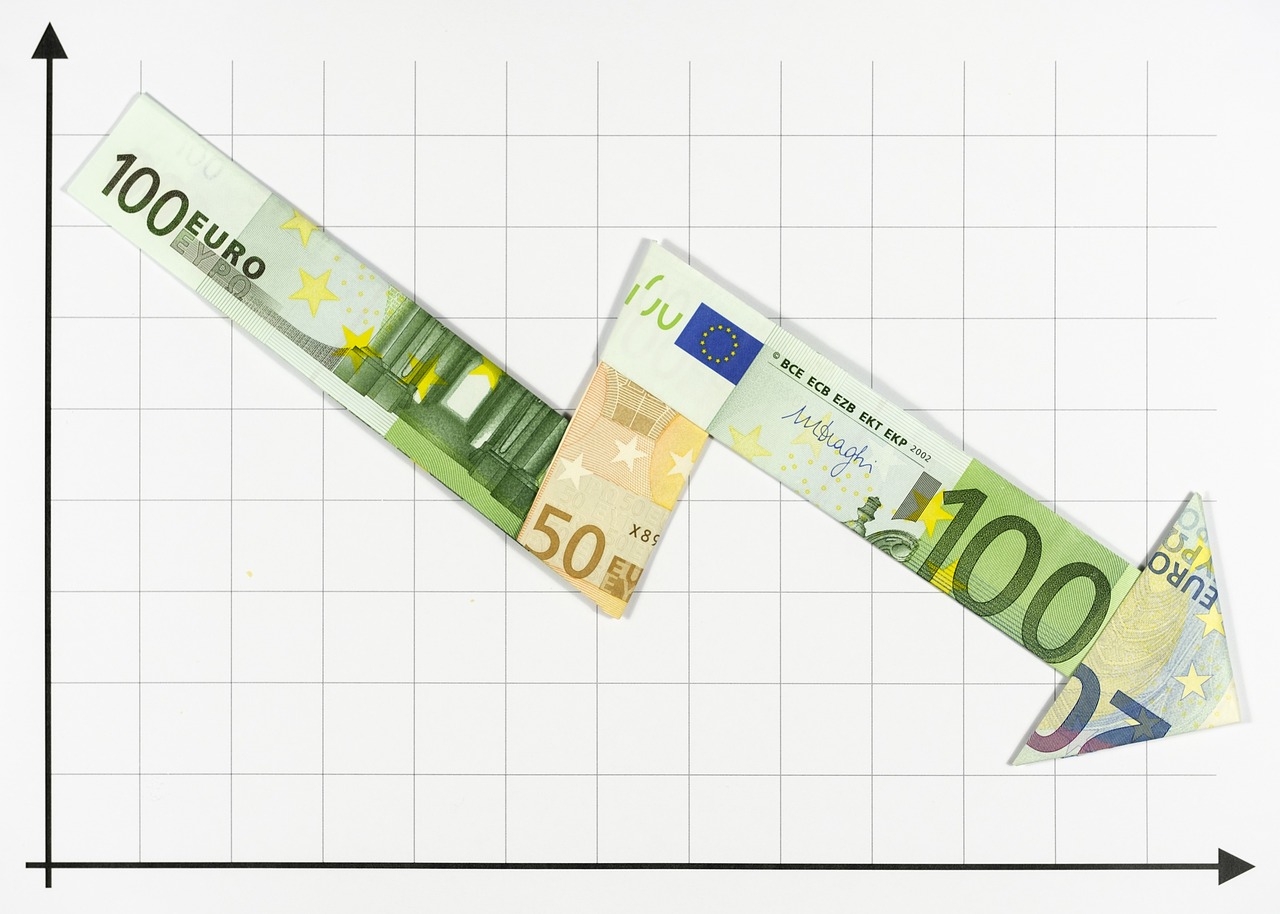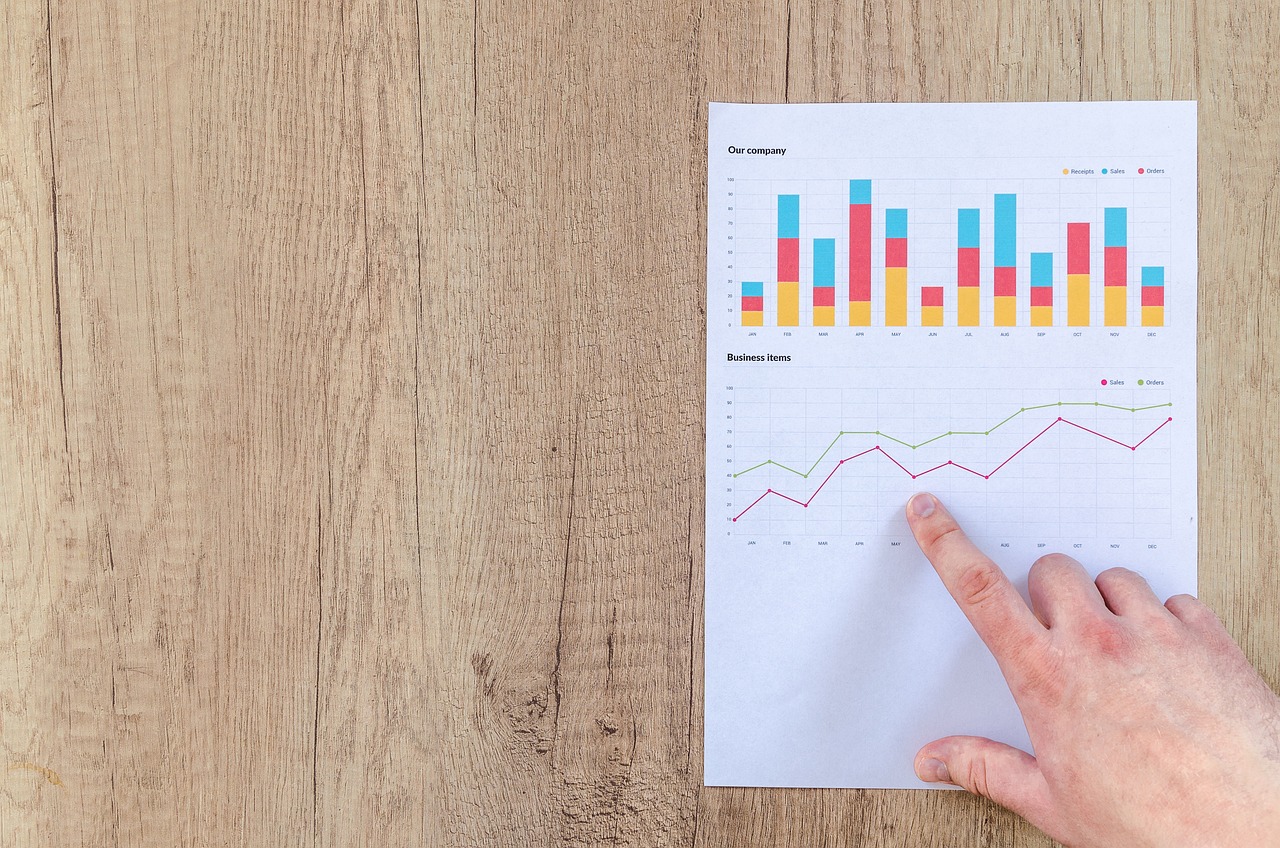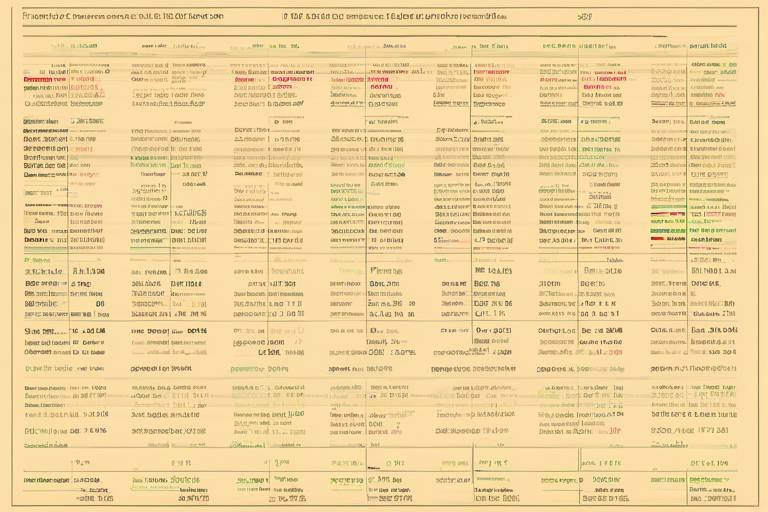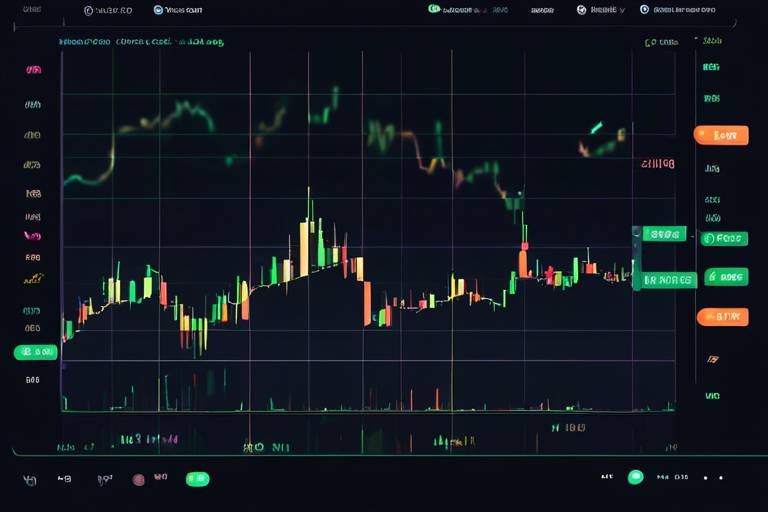The Role of Candlestick Analysis in Market Timing
In the fast-paced world of trading, timing can be the difference between profit and loss. One of the most effective tools for achieving optimal market timing is candlestick analysis. This technique, rooted in Japanese trading practices, provides traders with a visual representation of price movements, allowing them to gauge market sentiment and make informed decisions. But what exactly is candlestick analysis, and how can it help traders navigate the often turbulent waters of financial markets?
At its core, candlestick analysis involves studying the patterns formed by individual candlesticks on a price chart. Each candlestick represents a specific time frame, showing the open, high, low, and close prices within that period. By analyzing these patterns, traders can identify potential reversals, continuations, and market trends, enhancing their ability to time their trades effectively. Imagine standing on the edge of a cliff, peering into the ocean below. The candlesticks act as your binoculars, offering clarity amidst the waves of market fluctuations.
As traders delve into the world of candlestick patterns, they discover a rich tapestry of signals that can indicate market behavior. From bullish engulfing patterns that suggest a surge in buying pressure to bearish dojis that hint at indecision, each pattern tells a story about the market's mood. For instance, a series of green candlesticks may indicate strong bullish sentiment, while a cluster of red candlesticks could signal impending bearish pressure. Understanding these patterns is akin to learning a new language; once you grasp the vocabulary, you can start to interpret the market's messages with greater accuracy.
The beauty of candlestick analysis lies not only in its ability to signal potential market movements but also in its versatility. Traders can combine candlestick patterns with other technical indicators to refine their strategies further. For example, integrating candlestick analysis with moving averages can smooth out price data and provide additional confirmation of trends. This synergy between different analytical techniques creates a more robust trading strategy, allowing traders to make decisions based on a comprehensive view of the market.
In conclusion, candlestick analysis is an invaluable tool for traders looking to improve their market timing. By understanding and interpreting candlestick patterns, traders can gain insights into market sentiment and make more informed decisions. As the trading landscape continues to evolve, mastering candlestick analysis will undoubtedly remain a critical skill for those seeking success in the financial markets.
- What is a candlestick? A candlestick is a graphical representation of price movements in a specific time frame, showing the open, high, low, and close prices.
- How can candlestick patterns help in trading? Candlestick patterns can indicate market sentiment and potential price movements, allowing traders to make informed decisions about entry and exit points.
- What are some common candlestick patterns? Common patterns include dojis, engulfing patterns, hammers, and shooting stars, each with its own implications for market behavior.
- Can I use candlestick analysis alone? While candlestick analysis is powerful, it's often best used in conjunction with other technical indicators for improved accuracy.

Understanding Candlestick Patterns
Candlestick patterns are like the heartbeat of the financial markets, providing traders with critical insights into market sentiment and potential price movements. They are visual representations of price action over a specific time frame, and each candlestick tells a unique story about the battle between buyers and sellers. By interpreting these patterns, traders can gain a better understanding of market psychology, allowing them to make more informed decisions.
At the core of candlestick analysis lies the concept of price action. A single candlestick consists of a body and wicks (or shadows) that represent the open, close, high, and low prices of an asset during a specific period. The body of the candlestick is filled or colored depending on whether the closing price was higher or lower than the opening price. This simple yet powerful visual can reveal a lot about market trends and potential reversals.
There are numerous candlestick patterns that traders should familiarize themselves with, each carrying its own significance. Some of the most commonly recognized patterns include:
- Doji: Indicates indecision in the market.
- Engulfing: A strong reversal signal.
- Hammer: Suggests a potential bullish reversal.
- Shooting Star: Signifies a potential bearish reversal.
Understanding these patterns is crucial for traders aiming to enhance their market timing. For instance, a doji pattern often signifies that the market is experiencing a stalemate, which can lead to a breakout in either direction. Recognizing these signals can help traders anticipate potential price movements and adjust their strategies accordingly.
Moreover, the context in which these patterns appear is equally important. For example, a doji pattern appearing after a strong uptrend may suggest a potential reversal, while the same pattern in a downtrend could indicate a continuation of the bearish trend. Thus, traders must consider the surrounding price action and market conditions when interpreting candlestick patterns.
In summary, mastering candlestick patterns is an essential skill for any trader. By understanding the stories these patterns tell, traders can improve their market timing and make more informed decisions that align with their trading strategies. The beauty of candlestick analysis lies in its simplicity and effectiveness, making it an invaluable tool in the ever-evolving landscape of financial trading.

Key Candlestick Indicators
Candlestick analysis is not just about recognizing patterns; it's also about understanding the key indicators that can help traders make informed decisions. These indicators can act as a compass, guiding traders through the often turbulent waters of financial markets. By focusing on specific candlestick formations and their implications, traders can enhance their ability to predict market movements and improve their overall timing. Among the most critical indicators derived from candlestick analysis are the Relative Strength Index (RSI), Moving Average Convergence Divergence (MACD), and the Average True Range (ATR).
Each of these indicators provides unique insights into market conditions. For instance, the RSI measures the speed and change of price movements, helping traders identify overbought or oversold conditions. The MACD, on the other hand, shows the relationship between two moving averages of a security’s price, which can highlight potential buy or sell signals. Finally, the ATR measures market volatility, allowing traders to gauge how much a price might fluctuate over a given period. Understanding these indicators can greatly enhance a trader's ability to navigate the market effectively.
To better illustrate how these indicators work, let's take a closer look at each one:
| Indicator | Description | Application |
|---|---|---|
| Relative Strength Index (RSI) | A momentum oscillator that measures the speed and change of price movements. | Traders use RSI to identify overbought or oversold conditions, typically using a threshold of 70 (overbought) and 30 (oversold). |
| Moving Average Convergence Divergence (MACD) | A trend-following momentum indicator that shows the relationship between two moving averages. | Traders look for MACD crossovers, where the MACD line crosses above or below the signal line, indicating potential buy or sell signals. |
| Average True Range (ATR) | A volatility indicator that measures market volatility by decomposing the entire range of an asset price for a given period. | ATR helps traders determine position sizing and set stop-loss orders based on market volatility. |
By integrating these indicators into their trading strategies, traders can create a more comprehensive approach to market timing. For example, a trader might look for a bullish engulfing pattern confirmed by a rising RSI, indicating strong upward momentum. Alternatively, if a gravestone doji appears alongside a high ATR, it might signal an impending reversal in a volatile market. The synergy between candlestick patterns and these indicators can significantly enhance a trader's decision-making process.
In conclusion, understanding key candlestick indicators is essential for any trader aiming to improve their market timing. By leveraging tools like the RSI, MACD, and ATR, traders can gain deeper insights into market sentiment and make more informed decisions. The next step is to explore how these indicators can be effectively combined with other trading techniques for even better results.
- What is the best candlestick pattern for beginners? The doji pattern is often recommended for beginners as it indicates indecision in the market.
- How can I combine candlestick analysis with other indicators? You can use candlestick patterns alongside indicators like RSI or MACD to confirm signals and improve accuracy.
- Are candlestick patterns reliable? While no method is foolproof, candlestick patterns have a strong track record in predicting market movements when used correctly.

Doji Patterns
Doji patterns are a fascinating aspect of candlestick analysis that signify a moment of indecision in the market. When you see a doji on your trading chart, it's like a flashing light that says, "Hey, something important is happening here!" A doji occurs when the opening and closing prices of a security are virtually the same, creating a candlestick with a very small body and long wicks. This unique formation can indicate that buyers and sellers are in a standoff, which can lead to significant price movements in either direction.
Understanding the significance of doji patterns is crucial for any trader looking to enhance their market timing. In essence, these patterns can signal potential reversals or continuations in price trends. A doji doesn't merely tell you that the market is uncertain; it also prompts you to ask the right questions. For example, "Are buyers losing momentum?" or "Could sellers be gaining control?" By interpreting these signals accurately, traders can make informed decisions and potentially capitalize on upcoming market shifts.
There are several types of doji patterns, each carrying its own implications:
- Standard Doji: Represents pure indecision.
- Long-Legged Doji: Indicates a stronger battle between buyers and sellers.
- Gravestone Doji: Suggests a potential bearish reversal.
- Dragonfly Doji: Indicates a potential bullish reversal.
Among these, the long-legged doji and gravestone doji are particularly noteworthy. The long-legged doji, characterized by its long upper and lower shadows, indicates a strong indecision phase where the market is grappling with conflicting forces. Traders often interpret this as a signal to be cautious, as the volatility surrounding these patterns can lead to sudden price movements.
On the other hand, the gravestone doji is a powerful indicator of potential bearish reversals. Formed after an uptrend, it showcases a situation where buyers pushed the price up, but sellers stepped in and drove it back down to the opening level. This pattern can serve as a warning sign for traders, suggesting that the upward momentum may be weakening.
In summary, doji patterns are essential tools in a trader's arsenal. Their ability to signal indecision and potential reversals can help traders navigate the complexities of the market. By paying close attention to these patterns and understanding their implications, traders can enhance their decision-making processes and improve their market timing.

Long-Legged Doji
The is a fascinating candlestick pattern that serves as a beacon of indecision in the market. Imagine standing at a crossroads, unable to choose which path to take; that’s the essence of a Long-Legged Doji. This pattern forms when the opening and closing prices are nearly equal, resulting in a small body, while the upper and lower shadows are significantly long. This characteristic indicates that both buyers and sellers are actively fighting for control, but neither side can gain a decisive advantage.
Understanding the implications of the Long-Legged Doji can be a game-changer for traders. When you see this pattern, it often suggests that the market is experiencing a period of uncertainty. This uncertainty can arise from various factors, such as economic news, earnings reports, or geopolitical events. Traders often interpret the Long-Legged Doji as a signal to be cautious, as it may precede a significant price movement. Recognizing this pattern can help you avoid rash decisions based on market noise.
To effectively utilize the Long-Legged Doji in your trading strategy, consider the following points:
- Context Matters: Always analyze the Long-Legged Doji in the context of preceding price action. A Long-Legged Doji after a strong trend may indicate a potential reversal, while one in a consolidation phase might signal a continuation.
- Volume Confirmation: Look for volume spikes accompanying the Long-Legged Doji. High volume can strengthen the validity of the pattern, suggesting that a significant price movement may follow.
- Combine with Other Indicators: Enhance your analysis by combining the Long-Legged Doji with other technical indicators, such as trend lines or moving averages, to confirm potential entry or exit points.
In essence, the Long-Legged Doji is not just a pattern; it's a storyteller, revealing the market's emotional state. By paying close attention to this pattern and its context, you can gain valuable insights into potential market shifts. So the next time you spot a Long-Legged Doji on your charts, remember that it’s more than just a candlestick—it's a signal to pause, reflect, and prepare for what might come next.
What does a Long-Legged Doji indicate?
A Long-Legged Doji indicates indecision in the market, suggesting that neither buyers nor sellers can dominate the price action. It often precedes significant price movements.
How can I use the Long-Legged Doji in my trading strategy?
You can use the Long-Legged Doji by analyzing it in the context of previous price action, confirming it with volume, and integrating it with other technical indicators to enhance your trading decisions.
Is the Long-Legged Doji a reliable pattern?
While the Long-Legged Doji is a useful indicator of market indecision, it should not be used in isolation. It’s best to confirm its implications with additional analysis and indicators to improve reliability.

Gravestone Doji
The is a fascinating candlestick pattern that traders often look for as a potential signal of a bearish reversal. Imagine a candle that has a long upper shadow, a small body at the bottom, and no lower shadow—this is your Gravestone Doji. It typically appears after an uptrend, indicating that buyers tried to push the price higher but were ultimately met with strong resistance from sellers. This struggle creates an atmosphere of indecision and can foreshadow a shift in market sentiment.
To understand the significance of the Gravestone Doji, let’s break down its components:
- Long Upper Shadow: This signifies that buyers pushed the price up, but sellers quickly stepped in to bring it back down.
- Small Body: The body of the candlestick is small, indicating that the opening and closing prices were very close, reflecting indecision.
- No Lower Shadow: The absence of a lower shadow reinforces the idea that the price could not maintain lower levels, which is often a sign of weakness.
When traders spot a Gravestone Doji, especially after a significant price increase, it’s crucial to consider the context. For instance, if this pattern forms at a resistance level, it could be a strong indication that the upward momentum is fading. The market participants are essentially sending a message: "We tried to push higher, but we couldn't sustain it." This can lead to a shift in market dynamics where sellers gain the upper hand.
Moreover, the Gravestone Doji is most effective when confirmed by subsequent price action. If the following candlestick closes lower, it adds weight to the bearish signal. Traders often look for confirmation through additional indicators or patterns to avoid false signals. This is where combining candlestick analysis with other techniques can be beneficial. For instance, if you see a Gravestone Doji alongside a bearish divergence on an oscillator like the RSI, the signal becomes even stronger.
In summary, the Gravestone Doji serves as a vital tool in a trader’s arsenal, especially when it comes to identifying potential reversals. By recognizing this pattern and understanding its implications, traders can make more informed decisions and navigate the markets with greater confidence.
What does a Gravestone Doji indicate?
A Gravestone Doji typically indicates a potential bearish reversal, suggesting that buyers tried to push prices higher but were unable to maintain that momentum.
How can I confirm a Gravestone Doji signal?
Confirmation can be achieved by observing the price action following the Gravestone Doji. If the next candlestick closes lower, it reinforces the bearish signal. Additionally, using other indicators like moving averages or trend lines can provide further validation.
Is the Gravestone Doji effective in all market conditions?
While the Gravestone Doji can be a powerful signal, its effectiveness can vary depending on market conditions. It's best used in conjunction with other analysis techniques to improve accuracy.

Engulfing Patterns
This article explores the significance of candlestick analysis in trading, highlighting its utility in market timing, interpretation of patterns, and how traders can leverage this technique for better decision-making.
Candlestick patterns provide insights into market sentiment. This section delves into various patterns, their meanings, and how they can signal potential market movements, enhancing traders' ability to make informed decisions.
Certain indicators derived from candlestick analysis can help traders identify trends. This section discusses essential indicators, their calculations, and how they can be applied in real-world trading scenarios for improved timing.
Doji patterns signify indecision in the market. This subsection explains their formation, significance, and how traders can interpret them to predict potential reversals or continuations in price trends.
The long-legged doji indicates a strong indecision phase. This part elaborates on its characteristics and how it can serve as a key signal for traders assessing market volatility.
The gravestone doji represents a potential bearish reversal. This section details its formation and implications for traders looking to capitalize on market shifts.
Engulfing patterns are powerful reversal signals that traders should keep an eye on when analyzing candlestick charts. These patterns occur when a small candlestick is followed by a larger candlestick that completely engulfs the previous one. This engulfing behavior can indicate a significant shift in market sentiment and often serves as a precursor to price reversals.
There are two main types of engulfing patterns: bullish engulfing and bearish engulfing. A bullish engulfing pattern appears at the end of a downtrend and signifies that buyers have taken control, which could lead to a price increase. Conversely, a bearish engulfing pattern forms at the end of an uptrend, indicating that sellers have gained the upper hand, potentially resulting in a price decline.
Understanding the context in which these patterns occur is crucial. For instance, a bullish engulfing pattern that forms after a prolonged downtrend is more significant than one that appears amidst a sideways market. Similarly, a bearish engulfing pattern following a strong uptrend can signal a more reliable reversal. Traders often look for confirmation through subsequent price action or additional indicators.
To illustrate the significance of engulfing patterns, consider the following table:
| Pattern Type | Market Condition | Implication |
|---|---|---|
| Bullish Engulfing | End of Downtrend | Potential Price Increase |
| Bearish Engulfing | End of Uptrend | Potential Price Decrease |
In addition to recognizing these patterns, traders often combine them with other technical indicators to enhance their decision-making process. For example, using volume analysis can provide further confirmation of the strength of an engulfing pattern. A bullish engulfing pattern accompanied by high trading volume indicates strong buying interest, while a bearish engulfing pattern with high volume suggests robust selling pressure.
Integrating candlestick analysis with other trading strategies can enhance accuracy. This section discusses how combining multiple techniques can lead to more effective market timing and decision-making.
Trend lines provide context to candlestick patterns. This part explains how traders can leverage trend lines alongside candlestick analysis to improve their market timing and identify potential entry and exit points.
Moving averages smooth out price data. This section explores how integrating moving averages with candlestick analysis can assist traders in confirming trends and enhancing their trading strategies for better results.
- What is a bullish engulfing pattern? A bullish engulfing pattern occurs when a larger candlestick engulfs a smaller one during a downtrend, indicating a potential price increase.
- How can I confirm an engulfing pattern? Traders often look for increased volume or subsequent price action to confirm the strength of an engulfing pattern.
- Are engulfing patterns always reliable? While engulfing patterns can be powerful signals, they should be used in conjunction with other indicators and market context for better accuracy.

Combining Candlestick Analysis with Other Techniques
Integrating candlestick analysis with other trading strategies can significantly enhance a trader's ability to make informed decisions. Just like a chef combines various ingredients to create a delicious dish, traders can mix different analytical techniques to improve their market timing and overall performance. By doing so, they can gain a more comprehensive view of the market, allowing for better predictions and a higher probability of success.
One of the most effective ways to combine candlestick analysis is with trend lines. Trend lines serve as a visual representation of the market's direction, helping traders identify whether the market is trending upwards, downwards, or moving sideways. When a trader uses trend lines in conjunction with candlestick patterns, they can gain valuable context. For instance, if a bullish engulfing pattern forms at a trend line support level, it could indicate a strong buying opportunity. On the other hand, if a bearish engulfing pattern appears near a resistance trend line, it might signal a potential reversal. This synergy allows traders to make more calculated decisions based on the convergence of multiple factors.
Moreover, integrating moving averages with candlestick analysis can further refine trading strategies. Moving averages are essential tools that help smooth out price data, making it easier to identify trends over a specified period. When traders apply moving averages alongside candlestick patterns, they can confirm trends and enhance their decision-making process. For example, if a trader notices a bullish candlestick pattern occurring above a rising moving average, it could reinforce the idea of a strong upward trend. Conversely, if a bearish candlestick pattern forms below a declining moving average, it may indicate a potential downtrend.
To illustrate the effectiveness of combining these techniques, consider the following table that outlines how different combinations can lead to improved market timing:
| Combination Technique | Indicator Type | Potential Outcome |
|---|---|---|
| Candlestick + Trend Lines | Support/Resistance | Enhanced entry/exit points |
| Candlestick + Moving Averages | Trend Confirmation | Increased probability of trend continuation |
| Candlestick + Volume Analysis | Market Strength | Better understanding of price movements |
By understanding how to combine these techniques, traders can create a more robust trading strategy that not only improves their market timing but also increases their overall confidence in their trading decisions. The beauty of trading lies in its complexity, and by leveraging multiple tools, traders can navigate this complexity with greater ease and precision.
In summary, while candlestick analysis is a powerful tool on its own, its true potential is unlocked when combined with other techniques such as trend lines and moving averages. This holistic approach allows traders to view the market from different angles, enhancing their ability to make informed decisions and ultimately leading to more successful trading outcomes.
- What are candlestick patterns? Candlestick patterns are formations created by the price movement of an asset over a specific time frame, providing insights into market sentiment and potential future movements.
- How can I combine candlestick analysis with other techniques? You can combine candlestick analysis with trend lines, moving averages, and volume analysis to enhance your market timing and decision-making.
- What is a bullish engulfing pattern? A bullish engulfing pattern occurs when a small bearish candlestick is followed by a larger bullish candlestick, indicating a potential reversal to an upward trend.

Using Candlesticks with Trend Lines
When it comes to trading, combining different analytical methods can often yield the best results. One powerful combination is using candlestick analysis alongside trend lines. This pairing allows traders to gain a clearer perspective on market movements and make more informed decisions. Think of candlesticks as the vibrant brush strokes on a canvas, while trend lines serve as the framework that holds the artwork together. By integrating these two techniques, traders can enhance their ability to identify potential entry and exit points.
Trend lines are essential for understanding the overall direction of the market. They help traders visualize whether a market is trending upwards, downwards, or moving sideways. When you plot a trend line, you essentially draw a line that connects key price points, indicating the general trajectory of the price action. In contrast, candlestick patterns provide insights into market sentiment and potential reversals. So, when you layer these two tools together, you create a more comprehensive picture of the market landscape.
To effectively utilize candlesticks with trend lines, traders should look for specific signals where the two intersect. For example, if a candlestick pattern indicates a potential reversal near a trend line, it can serve as a strong confirmation signal. This is particularly useful in volatile markets where price movements can be unpredictable. Here are a few scenarios to consider:
- Breakouts: If a candlestick closes above a downtrend line, it may signal a breakout, suggesting a potential bullish trend.
- Reversals: A candlestick pattern forming at a trend line can indicate a reversal point, especially if it aligns with other technical indicators.
- Support and Resistance: Trend lines can act as dynamic support and resistance levels. A candlestick pattern that forms at these levels can provide crucial insights into potential price movements.
For instance, consider a situation where a bullish engulfing pattern appears just above a rising trend line. This combination can suggest that the upward momentum is likely to continue, providing traders with a strong signal to enter a long position. Conversely, if a bearish engulfing pattern forms just below a descending trend line, it might indicate a potential shift in market sentiment, prompting traders to consider shorting the asset.
Moreover, traders should always be mindful of the time frame they are analyzing. Shorter time frames may yield different results compared to longer ones. A trend line on a daily chart might look very different from one on an hourly chart. Therefore, it's essential to align your candlestick patterns with the appropriate time frame to enhance the accuracy of your analysis.
In summary, the integration of candlestick analysis with trend lines creates a robust framework for traders. By paying attention to the interactions between these two elements, traders can better navigate the complexities of the market. This approach not only improves market timing but also increases the likelihood of making profitable trades. So, the next time you're analyzing a chart, consider how candlesticks and trend lines can work together to illuminate your trading path.
- What are candlestick patterns? Candlestick patterns are formations created by the price movements of an asset over a specific time frame, providing insights into market sentiment.
- How do I draw trend lines? To draw a trend line, connect at least two significant price points on a chart, ensuring the line reflects the overall direction of the price movement.
- Can I use candlestick patterns on any time frame? Yes, candlestick patterns can be analyzed on any time frame, but the significance may vary. Always consider the context of the time frame being used.
- What does it mean if a candlestick pattern forms at a trend line? It can indicate a potential reversal or continuation of the trend, depending on the type of pattern and its context within the trend line.

Integrating with Moving Averages
When it comes to trading, combining different analytical techniques can significantly enhance your decision-making process. One of the most effective ways to achieve this is by integrating candlestick analysis with moving averages. Moving averages are essential tools that help smooth out price data, making it easier to identify trends over a specific period. By marrying these two techniques, traders can gain a clearer picture of market dynamics and improve their timing for entering and exiting trades.
So, how do you effectively combine candlestick patterns with moving averages? First, it’s crucial to understand that moving averages can serve as dynamic support and resistance levels. For example, when the price is above a moving average, it often indicates a bullish trend, while being below it suggests a bearish trend. When you overlay candlestick patterns on this moving average backdrop, you can spot potential entry points more reliably. Imagine you see a bullish engulfing pattern forming just above a moving average; this could signal a strong buying opportunity, as it suggests that the market is gaining momentum in an upward direction.
Moreover, moving averages can help confirm the signals generated by candlestick patterns. For instance, if a trader identifies a doji pattern, which signifies indecision, they can look at the moving average to determine the overall trend. If the doji appears above a rising moving average, it might indicate a potential reversal or continuation of the upward trend, prompting traders to be cautious but optimistic. Conversely, if the doji appears below a declining moving average, it may suggest a bearish reversal is more likely.
To illustrate this integration further, let’s look at a simple example:
| Candlestick Pattern | Moving Average Position | Trading Action |
|---|---|---|
| Bullish Engulfing | Above Moving Average | Consider Buying |
| Bearish Engulfing | Below Moving Average | Consider Selling |
| Doji | At Moving Average | Watch for Confirmation |
In this table, we can see how different candlestick patterns relate to the position of moving averages and the corresponding trading actions. This approach allows traders to make more informed decisions by considering both the price action represented by candlesticks and the trend direction indicated by moving averages.
Additionally, traders can utilize different types of moving averages—such as the simple moving average (SMA) or the exponential moving average (EMA)—to suit their trading style. The EMA, for instance, gives more weight to recent prices, making it more responsive to new information. This can be particularly useful in fast-moving markets where timely decisions are critical.
Ultimately, the integration of candlestick analysis with moving averages is not just about using two tools in isolation; it’s about creating a comprehensive trading strategy that enhances your ability to read the market. By understanding the relationship between price action and moving averages, you can better anticipate market movements and make decisions that align with the prevailing trend. So, the next time you analyze a chart, consider how these two powerful techniques can work together to sharpen your trading edge.
- What are moving averages? Moving averages are indicators that smooth out price data to identify trends over a specified period.
- How can I use candlestick patterns with moving averages? By analyzing candlestick patterns in relation to moving averages, traders can identify potential entry and exit points based on confirmed trends.
- What is the difference between SMA and EMA? The simple moving average (SMA) gives equal weight to all data points, while the exponential moving average (EMA) gives more weight to recent prices, making it more responsive to new information.
- Can I rely solely on candlestick patterns for trading? While candlestick patterns are powerful, combining them with other indicators like moving averages can enhance accuracy and decision-making.
Frequently Asked Questions
- What is candlestick analysis?
Candlestick analysis is a method used in trading to interpret price movements through visual patterns called candlesticks. Each candlestick represents a specific time period, showing the open, high, low, and close prices, providing insights into market sentiment and potential future movements.
- How can candlestick patterns help in market timing?
Candlestick patterns can signal potential reversals or continuations in price trends, allowing traders to make more informed decisions about when to enter or exit trades. By understanding these patterns, traders can better anticipate market movements and optimize their timing for maximum profit.
- What are some common candlestick patterns I should know?
Some common candlestick patterns include the Doji, Engulfing patterns, Hammer, and Shooting Star. Each of these patterns has its own unique characteristics and implications, helping traders gauge market sentiment and potential price action.
- What does a Doji pattern indicate?
A Doji pattern signifies indecision in the market, where the opening and closing prices are nearly the same. This can indicate a potential reversal or continuation, depending on the preceding price action and the context in which it appears.
- How do I interpret a Long-Legged Doji?
The Long-Legged Doji is characterized by long upper and lower shadows, indicating significant volatility and indecision. Traders often interpret this as a signal that the market may be at a turning point, making it crucial for assessing potential reversals.
- What is an Engulfing pattern?
An Engulfing pattern consists of two candlesticks where the second candlestick completely engulfs the first one. A bullish engulfing pattern suggests a potential upward reversal, while a bearish engulfing pattern indicates a potential downward reversal, making it a powerful signal for traders.
- Can I combine candlestick analysis with other trading techniques?
Absolutely! Combining candlestick analysis with other techniques like trend lines and moving averages can enhance your trading strategy. This integration allows for better confirmation of trends and more accurate market timing, leading to improved trading results.
- How do moving averages complement candlestick analysis?
Moving averages smooth out price data, helping to identify the overall trend. When used alongside candlestick analysis, they can confirm the direction of the trend and provide additional context for potential entry and exit points, enhancing the effectiveness of trading strategies.



















